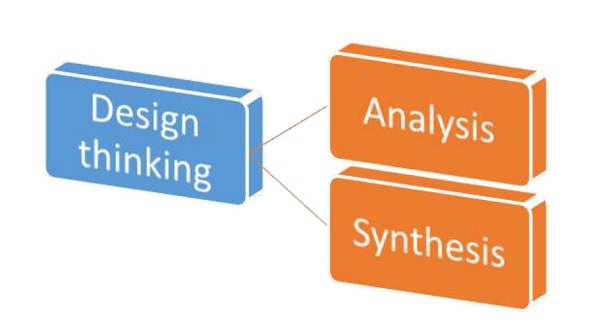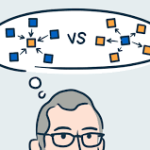In this topic, we will see the difference between two ways of solution-based thinking, i.e. Analysis and Synthesis, and also get to know how it helps in design thinking.
Analysis
Analysis is derived from the Greek word ‘analusis’, which translates into ‘breaking up’ in English. Analysis is older than the times of great philosophers like Aristotle and Plato. As discussed in the previous section, analysis is the process of breaking down a big single entity into multiple fragments. It is a deduction where a bigger concept is broken down to smaller ones. This breaking down into smaller fragments is necessary for improved understanding.
So, how does analysis help in design thinking? During analysis, design thinkers are required to break down the problem statement into smaller parts and study each one of them separately. The different smaller components of the problem statement are to be solved one-by-one, if possible. Then, solutions are thought for each of the small problems. Brainstorming is done over each of the solutions.
Later, a feasibility check is done to include the feasible and viable solutions. The solutions that don’t stand firm on the grounds of feasibility and viability are excluded from the set of solutions to be considered.
Design thinkers are, then, encouraged to connect with the diverse ideas and examine the way each idea was composed. This process of breaking down the bigger problem statement at hand into multiple smaller problem statements and examining each as a separate entity is called analysis.
Reductionism
The underlying assumption in analysis is reductionism. Reductionism states that the reality around us can be reduced down to invisible parts. The embodiment of this principle is found in basic axioms of analytic geometry, which says “the whole is equal to the sum of its parts”. However, understanding of a system cannot be developed by analysis alone. Hence, synthesis is required following analysis.
Synthesis
Synthesis refers to the process of combining the fragmented parts into an aggregated whole. It is an activity that is done at the end of the scientific or creative inquiry. This process leads to creation of a coherent bigger entity, which is something new and fresh. How does synthesis come into picture in design thinking?
Once the design thinkers have excluded the non-feasible and non-viable solutions and have zeroed-in on the set of feasible and viable solutions, it is time for the thinkers to put together their solutions.
Out of 10 available solutions, around 2-3 solutions may need to be excluded since they may not fit into the larger picture, i.e. the actual solution. This is where synthesis helps.
The design thinkers start from a big entity called the problem statement and then end up with another bigger entity, i.e. the solution. The solution is completely different from the problem statement. During synthesis, it is ensured that the different ideas are in sync with each other and do not lead to conflicts.



Comments are closed